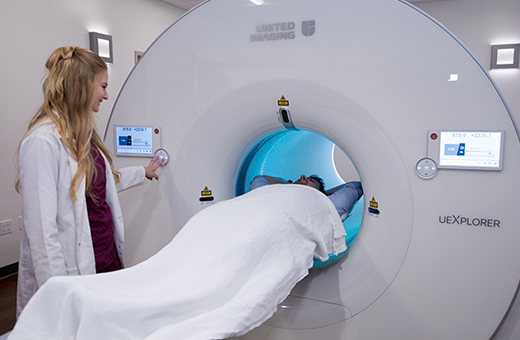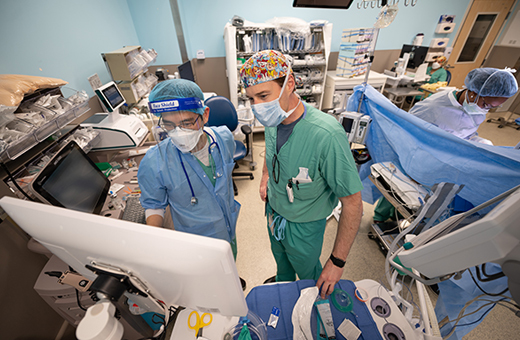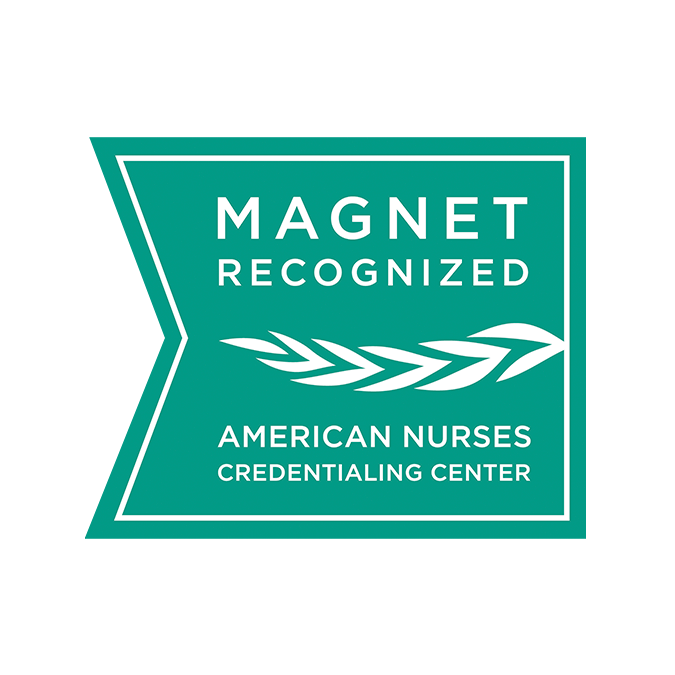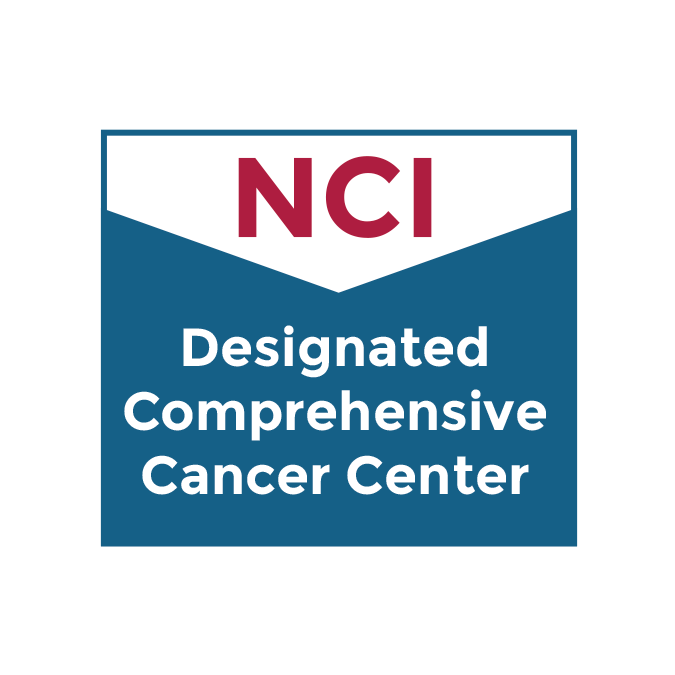Vascular Neurosurgery
Our expert vascular neurosurgeons are here to help you heal if you have a condition affecting the blood vessels in your brain or spine. We use the most advanced techniques to protect your health and support your recovery.
Medically reviewed by Ben Waldau, M.D. on Aug. 12, 2025.

About Vascular Neurosurgery
Living with a neurovascular condition can feel overwhelming, but you're not alone. We'll take time to explain your options, answer your questions, and create a care plan that’s right for you. We combine compassionate care with the latest advances to give you the best possible outcome. At UC Davis Health, your safety, comfort, and recovery are always our top priorities.
Vascular Neurosurgery Expertise
We offer a full range of the latest treatments for blood vessel conditions in the brain and spine. Our team will recommend the safest, most effective approach based on your needs, health and goals. We are here to support you every step of the way. We have expertise in:
Vascular Neurosurgery
We offer minimally invasive operations for aneurysm clipping through the eyebrow or through a small incision in front of the ear (mini-pterional craniotomy). Our center also performs arteriovenous malformations (AVM) resection with or without pre-operative embolization. We offer direct or indirect bypass surgery for Moyamoya disease or intracranial atherosclerosis. In addition, we perform brain cavernoma resections using minimally invasive approaches.
Endovascular Neurosurgery
We treat brain blood vessel conditions using tiny catheters, avoiding large incisions and speeding your recovery. We use this minimally invasive approach for aneurysm coiling, AVM embolization and stroke treatments.
Stroke Neurosurgery
Our team offers fast, life-saving treatments for stroke, including procedures to remove clots and restore blood flow.
We use the latest tools and technology to protect your brain and support your best possible recovery.
Spinal Vascular Disorder Treatment
We treat rare blood vessel problems in the spine to relieve symptoms like weakness, numbness and pain. Our specialists use minimally invasive methods whenever possible.
Request an Appointment
As Sacramento's No. 1 hospital, you'll benefit from unique advantages in primary care and specialty care. This includes prevention, diagnosis and treatment options from experts in 150 specialties.
Referring Physicians
To refer a patient, submit an electronic referral form or call.
800-4-UCDAVIS
Patients
Call to make an appointment.
Consumer Resource Center
800-2-UCDAVIS
Preparing for surgery can feel stressful, but you are in expert hands at UC Davis Health. Our team will guide you through every step, making sure you feel informed and supported. We use the latest tools and techniques to plan your surgery safely and tailor it to your unique needs.
-

Before Surgery
You may need imaging tests, lab work or other evaluations to help us plan your safest, most effective surgery. Our team will give you clear instructions about medications, eating, and drinking before surgery. We'll answer your questions and ensure you know exactly what to expect on the day of your procedure.
-

During Surgery
You’ll be under anesthesia, and your team will carefully monitor you throughout the entire procedure. We use advanced imaging tools to guide every step and protect your brain or spine during surgery. Your surgical team will work closely together to perform the procedure with precision.
-

After Surgery
After surgery, you’ll wake up in a recovery area where we closely monitor your breathing, comfort, and vital signs. Our team will check on you often and manage any pain to keep you as comfortable as possible. You will stay in the hospital for a few days so we can support a safe and steady recovery.
Home Care After Vascular Neurosurgery
Before you leave the hospital, we’ll make sure you feel prepared to continue your recovery at home. Your team will give you clear instructions to help you heal safely and return to daily activities at your own pace. Every recovery is different, and we’re always here if you have questions or need extra support.
Follow Medication Instructions
Take all prescribed medicines exactly as directed to help manage pain and prevent complications.
Take It Slow
Rest as much as needed and gradually ease back into normal activities as your care team recommends.
Attend Follow-Up Appointments
Regular visits after surgery help us check your healing, answer questions, and adjust your care plan if needed.
When to Contact Your Surgeon
Call your surgeon if you notice any new or worsening symptoms after surgery. Call us right away if you have a severe headache, weakness, trouble speaking, vision changes or signs of infection. We are always here to support you.

Ranked among the nation’s best hospitals
A U.S. News & World Report best hospital in cardiology, heart & vascular surgery, diabetes & endocrinology, ENT, geriatrics, neurology & neurosurgery, and pulmonology & lung surgery.

Ranked among the nation’s best children’s hospitals
U.S. News & World Report ranked UC Davis Children’s Hospital among the best in pediatric nephrology, orthopedics*, and pulmonology & lung surgery. (*Together with Shriners Children’s Northern California)

Ranked Sacramento’s #1 hospital
Ranked Sacramento’s #1 hospital by U.S. News, and high-performing in aortic valve surgery, back surgery (spinal fusion), COPD, colon cancer surgery, diabetes, gynecological cancer surgery, heart arrhythmia, heart failure, kidney failure, leukemia, lymphoma & myeloma, lung cancer surgery, pacemaker implantation, pneumonia, prostate cancer surgery, stroke, TAVR, cancer, orthopedics, gastroenterology & GI surgery, and urology.

The nation’s highest nursing honor
UC Davis Medical Center has received Magnet® recognition, the nation’s highest honor for nursing excellence.

World-class cancer care
One of ~59 U.S. cancer centers designated “comprehensive” by the National Cancer Institute.

A leader in health care equality
For the 13th consecutive year, UC Davis Medical Center has been recognized as an LGBTQ+ Healthcare Equality Leader by the educational arm of America’s largest civil rights organization.
Latest Neurological News
-
NOVEMBER 25, 2025
Search for top spinal surgeon led Alaskan family to UC Davis
-
NOVEMBER 24, 2025
Two years after epilepsy surgery, child is seizure-free
-
OCTOBER 15, 2025
What's at stake with federal research funding cuts
-
OCTOBER 02, 2025
Teen mysteriously loses mobility after common cold

